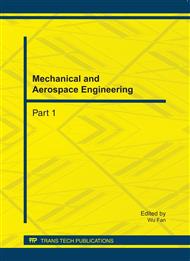[1]
S. E. Young, , The Curing of Organic Coatings by High Energy Radiation Processes, Journal of Progress in Organic Coatings, Vol. 4, pp.225-249, (1976).
DOI: 10.1016/0300-9440(76)80008-2
Google Scholar
[2]
Bartley, Coating Curing-The Role of Infrared, Journal of Pigment & Resin Technology, Vol. 28, No. 4, pp.233-236, (1999).
DOI: 10.1108/03699429910280756
Google Scholar
[3]
K. Maag, W. Lenhard, and H. Löffles, New UV Curing Systems for Automotive Applications, Journal of Progress in Organic Coatings, Vol. 40, pp.93-97, (2000).
DOI: 10.1016/s0300-9440(00)00144-2
Google Scholar
[4]
C. Geipel, and P. Stephan, Experimental Investigation of the Drying Process of Automotive Base Paints, Journal of Applied Thermal Engineering, Vol. 25, pp.2578-2590, (2005).
DOI: 10.1016/j.applthermaleng.2004.11.025
Google Scholar
[5]
D. Blanc , S. Vessot , P. Laurent, J. F. Gerard, and J. Andrieu, Study and Modelling of Coated Car Painting Film by Infrared or Convective Drying, Journal of Drying Technology, Vol. 15, No. 9, pp.2303-2323, (1997).
DOI: 10.1080/07373939708917363
Google Scholar
[6]
R. A. Dickie , D. R. Bauer, S. M. Ward, and D. A. Wagner , Modeling Paint and Adhesive Cure in Automobile, Journal of Progress in Organic Coatings, Vol. 31, pp.209-216, (1997).
DOI: 10.1016/s0300-9440(97)00039-8
Google Scholar
[7]
R. J. Hampshire, The Use of Radiant Heat Transfer in the Curing of Coatings on Complex Geometries and Problematic Substrates, Journal of Pigment & Resin Technology, Vol. 26, No. 4, pp.225-228, (1997).
DOI: 10.1108/03699429710174125
Google Scholar
[8]
Ashrafizadeh, R. Mehdipour, and M. Rezvani, Numerical Simulation of Convective Heat Transfer in a Continuous Paint Cure Oven, CANCAM Conference, Halifax, Canada, (2009).
Google Scholar
[9]
H. H. Lou, and Y.L. Huang, Integrated Modeling and Simulation for Improved Reactive Drying of Clear coat, Industrial Engineering Chemical Research, Vol. 39, pp.500-507, (2000).
DOI: 10.1021/ie990171g
Google Scholar
[10]
J. Zueco, and A. Campo, Network Model for the Numerical Simulation of Transient Radiation Transfer Process Between the Thick Walls of Enclosures, Journal of Applied Thermal Engineering, Vol. 26, p.673–679, (2006).
DOI: 10.1016/j.applthermaleng.2005.09.010
Google Scholar
[11]
J. Xiao, Jia Li, Q. Xu, Y. Huang, and H. H. Lou, ACS–Based Dynamic Optimization for Curing of Polymeric Coating, Journal of Wiley Inter Science, April, Vol. 52, No. 4, (2006).
Google Scholar
[12]
H. Erturk, O. A. Ezekoye, and J. R. Howell , Boundary Condition Design to Heat a Moving Object at Uniform Transient Temperature Using Inverse Formulation, Journal of Manufacturing Science and Engineering, Vol. 126, pp.619-626, (2004).
DOI: 10.1115/1.1763179
Google Scholar
[13]
G. Federov, K. H. Lee, and R. Viskanta, Inverse Optimal Design of the Radiant Heating in Materials Processing and Manufacturing, Journal of Materials Engineering and Performance, Vol. 7, p.719–726, (1998).
DOI: 10.1361/105994998770347260
Google Scholar
[14]
R. Mehdipour, A. Ashrafizadeh, K. J. Daun, and C. Aghanajafi, Dynamic Optimization of a Radiation Paint Cure Oven Using the Nominal Cure Point Criterion, Journal of Drying Technology, in press, 2009.
DOI: 10.1080/07373937.2010.482708
Google Scholar
[15]
R. Mehdipour, and C. Aghanajafi, Design of Continuous Radiation Paint Cure Ovens Using the Equivalent Isentropic Temperature/Time, MIMT 2010 pp.361-367.
DOI: 10.1115/1.859544.paper57
Google Scholar


